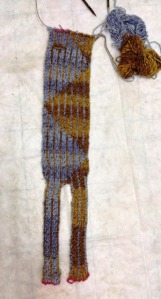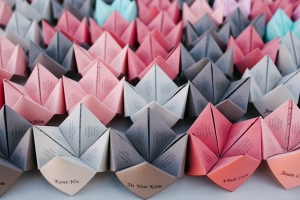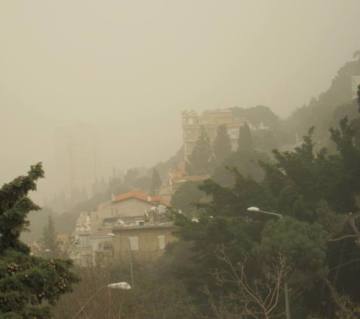I love cowls. I don’t knit nearly enough of them. But since I also love lots of other knitted items, I can’t be an exclusive cowl knitter.
I haven’t been able to discover how the word “cowl” came to be used for the knitted or crocheted item that we know today.
From the dictionary:
The cowl (from the Latin cuculla, meaning “a hood”) is an item of clothing consisting of a long, hooded garment with wide sleeves, worn by monks. Originally it may have referred simply to the hooded portion of a cloak.
OK, so many knitted cowls can be worn as hoods. But in today’s fashion it is usually worn more or less loosely around the neck, often as an alternative to a scarf. It can also be used to describe a type of neckline on a sweater or coat… But that doesn’t seem to be reflected in many modern definitions or discussions of the word.
Did you know that the top of Batman’s cape, or the thing that covers his head, is referred to as a cowl? Not a mask.

Cowl is also the name of parts of chimneys, cars, and airplanes… Yet although the fiber arts definition of cowl is not easily found when researching just the word itself, most images connected with it show our amazing range of knitting and crocheting talents!
I just finished my fourth cowl this year. Castanho, by Mamã Martinho. Lots of dropped stitches for a rustic look. It is meant to be shorter, knit flat and seamed, but I wanted a longer cowl so doubled the cast on and joined to knit in the round. I tweaked the repeats to fit.

The yarn – Winter Flamme by Americo Original – was perfect for the look. Super soft alpaca & wool, and thick/thin ranging from a heavy sport down to lace weight.
Kidlet is insisting that we share this item. Hm.
Earlier this year, the Sallah cowl by Bristol Ivy was the ideal pattern to show off the Unique Sheep Verve yarn – I love the pooling!
Interesting knit – the RS and the WS are knit with two different sized needles. Like wildly different – 3.75mm and 6mm! Kept me on my toes. I also love the applied i-cord edge, it smoothed out the edge and was great for hiding the ends when I changed yarn.
My Rainbow Volcano – aka the Lava Flow cowl by Dixie Norton – was a pattern that had been sitting in my queue for a very long time. Knitted with Ornaghi Filati Cross, a wool blend.
Simple rib, but those 24-stitch cables can be tricky.
Biggest cowl challenge was a test-knit for leethalknits, Lee Meredith. The Mikkey cowl uses Lee’s amazing colourwork in a different shape and construction that had me scratching my head for most of the project.
Strips that join up to the body of the cowl…that will match holes knit into the body… and that are later grafted onto the other end of the body…

And it ends up as a fantastic double-looped cowl that can be two loops the same length, or one long and one short…
Oh, and Lee’s adventure KAL project that I’m working on now will also be a cowl.
Because, as I said, I love cowls.





















 Yet I often see these terms used interchangeably. I don’t know why, they’re not synonyms. But lots of folks do seem to lump them all together.
Yet I often see these terms used interchangeably. I don’t know why, they’re not synonyms. But lots of folks do seem to lump them all together.














